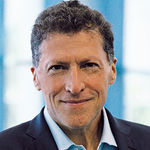
Arnie Weissmann
Omnitrak, a Honolulu-based research company, released research this week indicating that two-thirds of Americans consider themselves "mindful travelers" who "feel a personal responsibility to take care of the places they visit."
Omnitrak also measures Hawaii resident sentiment about tourism. The most recent results show that, generally speaking, Hawaiians have a favorable view of tourism, rising to 67% from 62% between fall 2021 and 2022. There was also a 3 percentage-point rise in the belief that tourism is being better managed on the Islands and that more effort is being made to balance economic benefits and quality of life for residents.
But despite those recent upticks, positive sentiment on the last two points was expressed by less than half of residents (44% and 49%, respectively), and a longer view tells a very different story. In 2010, when approximately 6.5 million visitors arrived, the positive sentiment was 80%. Since then, arrival numbers have risen by about 40%, to 9.3 million, and positive sentiment has dropped about 30 percentage points.
Does the long view suggest that visitation has exceeded optimal tourist capacity?
Not necessarily. The recent improvement in sentiment, coming after a year when visitation actually rose, suggests that there's an influence at play that doesn't fit easily into assumptions about overtourism. Understanding what that influence is may be key to mitigating issues linked to overtourism in Hawaii and other destinations that face resident pushback.
What that influence is may have surfaced in a recent conversation between Christian Johnson and Clifford Nae'ole. Johnson is CEO of PixlBank, a self-described "for-profit philanthropic" enterprise that recently launched an initiative called the Destination Preservation Project, designed to bridge the gap between residents' desires and visitors' expectations.
Nae'ole, a Maui native who is widely recognized as an authority on Hawaiian culture, is among Johnson's advisors. One of the first things he suggested to Johnson was that another word be added to PixlBank's "Preserve, Protect and Restore" tagline.
The word? Respect.
The importance of that word cannot be overestimated. The recent lift in positive resident sentiment coincided with the Hawaii Tourism Authority's (HTA) successful efforts to involve community stakeholders to direct local tourism management.
Community input coalesced around the concept of malama, a Hawaiian word that means "to care for," which at heart asks visitors to respect Hawaiian culture, its residents, environment and businesses.
It is Johnson's objective to work with advisors in Hawaii and other destinations and, together, "figure out how to give people a voice in a way that enhances the visitor's experience."
As regards Hawaii, he observed, "Yes, you paid a lot of money to come here and you're paying a lot of money to be here. But it's not a theme park." Negative sentiment, he continued, rises among residents who "feel pushed into the background, almost as though they're the people operating the rides, sweeping up the streets and serving the food and drinks."
These insights inform his company's suite of products, which seek to help even casual tourists better understand and support the destination, from pretrip messaging to engagement throughout their visit.
For example, should a sunbather on a Waikiki beach take a photo of Diamond Head, it could be turned into a virtual postcard that, if emailed, would unlock a $5 donation to a local nonprofit from the sponsoring entity, provide information about what the nonprofit is doing, give insight into Diamond Head's cultural importance and include the sponsor's branding. Johnson calls the concept "Givertising."
I like this approach because so many destinations try to mitigate negative resident sentiment by diminishing the visitor experience with disincentives: raising prices, restricting movement and cutting funding for destination marketing/management companies that communicate with visitors. These tactics, in absence of a larger strategy that takes into account why residents harbor resentment and how travelers can benefit from deeper cultural engagement, are typically ineffective.
There is, of course, no one-size-fits-all approach, and both the specific resentments and the mitigation of that negative sentiment are no doubt connected to the Islands' unique culture. Unearthing those specific cultural influences was the goal of the cohorts who helped shape Hawaii's recent tourism strategy.
This model of engaging communities in a structured format to discover the specific aspects of both dissatisfaction and mitigation would be an excellent starting point for other destinations to mirror. It's more than a little ironic that there are Hawaii legislators who have proposed dissolving the HTA, the agency that created one of the very few models that actually seems to work to reduce negative resident sentiment.
Omnitrak's finding that a significant majority of travelers consider themselves "mindful" is a positive indicator that, given an opportunity, travelers will engage with a destination in a respectful manner. That won't necessarily solve all problems associated with overtourism -- additional tactics to manage tourism will need to be crafted depending on the destination's specific challenges. But looking at overtourism holistically must include identifying ways to improve the experience for residents and travelers alike.